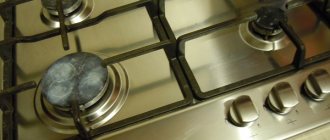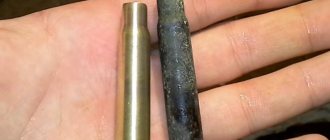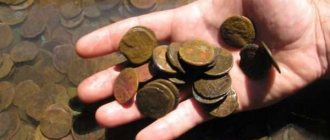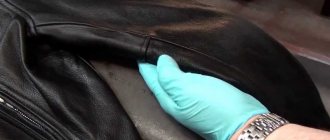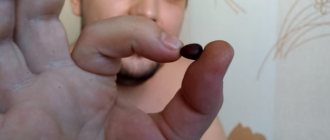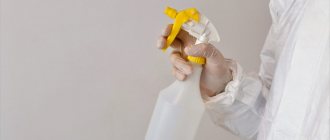Ceramic dishes are the favorite kitchen utensils of many housewives. These pans do not cause food to burn when cooking and are easier to clean. But if you ignore the operating instructions, food can burn on such dishes. Therefore, every housewife needs to know how to clean a ceramic frying pan.
Ceramic cookware is the favorite kitchen utensil of many housewives.
How not to clean a frying pan with a ceramic coating
Ceramic coating is quite vulnerable. Cleaning dishes is prohibited using the following methods:
- Hard brushes;
- Metal washcloths;
- Melamine sponges;
- By calcination;
- Compositions that contain abrasive particles.
The ceramic coating of the frying pan is quite vulnerable.
You also cannot use these methods:
- Boiling soda method. This method completely neutralizes carbon deposits, but destroys the coating;
- Glue treatment. After such exposure, a sticky residue may remain on the pan, which is difficult to remove.
Final Recommendations
To keep your cookware in perfect condition, thoroughly clean it of grease after each use. Remember that cleaning minor stains at home is much easier than dealing with old carbon deposits.
- After washing, thoroughly wipe the pan; drying out the ceramic coating naturally is highly undesirable. Of course, drops of water cannot cause significant damage to the dishes, but it is better to avoid unnecessary exposure to moisture.
- Do not use baking soda to clean ceramic-coated cookware. This substance is detrimental to ceramics and after exposure to it the coating will completely lose its non-stick properties.
By following these simple recommendations for caring for a ceramic-coated frying pan and basic methods for removing carbon deposits, you will be using your favorite cookware for a long time, and you will not have to spend money on new kitchen utensils.
Is it worth washing the device?
How to clean pans? If light stains occur, rinse the product in water. But it is important that there are no sudden temperature changes.
If light contamination occurs, rinse the ceramic frying pan in water.
If large stains have formed, it is better to wash the pan in a gentle way. To do this, first soak the dishes and then wipe them with a soft sponge with the addition of a cleaning agent. It is important to consider that ceramics are vulnerable to high temperatures. Therefore, before soaking a ceramic product, you need to wait until it is completely dry. Otherwise, small cracks may form on the ceramic surface. This will further provoke the loss of non-stick properties.
Fresh carbon deposits are removed after pre-soaking in water with a drop of cleaning agent
What is soot and where does it come from?
The frying pan is intended mainly for frying various foods, which means that the dishes are in constant contact with molecules of fats of vegetable and animal origin. During the cooking process, splashes of oil fall on the outer surface of the cookware and, under the influence of high temperature, are “welded” to it.
Over time, burnt fat accumulates on the outside and, as a result, a fairly dense layer of dark brown color is formed. This is called carbon deposits, which must be removed immediately, since the fight against old deposits will be much longer and more difficult.
How to remove carbon deposits inside a frying pan
There are several known methods that get rid of soot:
- Carbon deposits from a hot pan can be removed with a regular napkin with oil;
- It is recommended to wipe the relevant areas after rinsing the kitchen utensil. To do this, use any material previously soaked in oil. Then the dishes are rinsed with water;
- Fresh carbon deposits are removed after pre-soaking in water with a drop of cleaning agent;
- Remove oil residues on the surface using alcohol;
- Remains of old food are removed with an alkaline gel;
- You can also remove old stains with oven spray. A solution is prepared from it in a ratio of 11 to 20, and then the kitchen product is soaked in this solution for 15 minutes.
Remove oil residues on the surface using alcohol.
The most convenient and easiest method of getting rid of carbon deposits is to process them in the dishwasher. It is necessary to keep the pan on medium mode several times with the addition of the selected product.
Activated carbon
Activated carbon is an excellent absorbent, which is used not only in medical practice. Take 20–15 tablets of the black drug and grind it into a powder.
Rinse the pan with water and cover the entire bottom with dishwashing detergent. Rub the gel into an even layer, and sprinkle crushed activated carbon on top of it.
After 1 hour, rinse everything off with warm water, if necessary, rub the stain with a sponge or repeat the manipulation with the tablets.
What is suitable for cleaning the device from burnt oil from the outside
To clean the outside, use alcohol, gel and spray. A dishwasher will also help with this. Carbon deposits can be cleaned off using a special sponge. Always take into account that the coating is vulnerable to hard materials. You should also avoid washing the pan with abrasive materials.
Poor quality water causes scale to form on ceramic dishes.
How to descale a ceramic frying pan
Poor quality water causes scale to form on ceramic dishes. This happens especially often if the housewife likes to stew food. You can get rid of this using ordinary onions, kefir or tooth powder.
- For the first method, you will need a regular onion, peeled. It is cut into several pieces and boiled in a frying pan. Then leave the dishes with onion broth for 5 hours.
- In the second method, kefir is used. It is enough to rinse the dishes well and pour kefir into them. Its oxidizing properties will help get rid of rust.
- For the third method you will need tooth powder. The powder is mixed with a gentle detergent and foamed with water. You cannot rub this mixture into the dishes; just pour the solution into it. The equipment is left for 3 hours.
Scrapers with metal bristles should not be used.
Milam gel
Milam gel detergent is used to care for stoves, ovens, enamel sinks, pots and ceramic frying pans.
Its use is only possible with personal protective equipment, which includes a mask and rubber gloves. The substance is caustic and may burn skin.
How to clean a ceramic frying pan:
- Shake the bottle of gel before use.
- Apply to surface for 5-10 minutes. If that doesn't help, scrub with a sponge.
- After the procedure, rinse with water.
Milam gel can be used for cast iron, non-stick and stainless steel products. But it cannot be used to clean aluminum cookware.
Thanks to Milam gel, it will be easier to achieve cleanliness without the fear of scratching the shiny surface.
Products for cleaning ceramic frying pans at home
In order to clean a frying pan with this surface, it is necessary to use gentle methods. This will help keep your inventory in its original condition.
Water, sponge and detergent
How to clean an old frying pan? The coating is easy to clean; old carbon deposits are much more difficult to clean off. You can use a foam sponge. Scrapers with metal bristles should not be used.
You need to fill the dishes with water and add the cleaning agent. Preference is given to substances without abrasive particles in the composition. Residues of food easily come off the sides of the pan. This method will help get rid of recent soot.
Using water, a sponge and detergent to clean a ceramic frying pan.
Melamine sponge
These sponges do a good job of removing stains on tiles. But this material can easily cope with stains on ceramic coatings. The sponge is moistened with warm water, after which the dark spots on the material are thoroughly wiped off. Manufacturers advise against cleaning materials that come into contact with food this way. But the outer surface can be rubbed until the desired result is obtained.
You will need to rinse the outside with hot water; gently rub the dishes with a cloth; wash off the plaque with a stream of water. It is better not to wipe the inside of the pan. Otherwise, scratches may form on the ceramic coating.
Fat removal gels
The modern chemical industry offers many products for removing carbon deposits from the surface of dishes. For ceramic dishes, choose solutions without abrasive particles.
In order to remove minor stains, the dishes are pre-soaked. Then wipe with a sponge with the product applied to it. Then rinse with water.
Complex and old stains are more difficult to remove. This will take more time. It is better to use dishwashing detergent for this.
For ceramic dishes, choose solutions without abrasive particles.
Alcohol
An excellent way to clean stains is using rubbing alcohol. You need to use a diluted solution. First, soak the pan briefly in a soap-based solution. After which the product is cleaned with a soft sponge. Then the areas with soot are wiped with alcohol. This method is economical and quite effective.
Chemicals
Chemicals will help get rid of heavy carbon deposits. Hydrochloric acid is best. Ceramics are resistant to this substance. Organic formations remaining on the surface are easily destroyed by acid.
An excellent way to clean stains is using rubbing alcohol.
The procedure must be carried out with rubber gloves. The window in the kitchen must be open. If a person suffers from asthma or allergic reactions to this substance, then it is better not to carry out this manipulation.
Pour a small amount of product onto a kitchen sponge and try to clean the dishes. Under the influence of this composition, even the most obsolete fumes go away. If it was not possible to get rid of the formations the first time, then you can repeat the procedure. When cleaning a frying pan with hydrochloric acid, it is important not to allow the product to come into contact with the handle of the product. After the procedure is completed, the product is washed with laundry soap. Then the equipment is rinsed in a soda solution and rinsed.
When cleaning a frying pan with hydrochloric acid, it is important not to allow the product to come into contact with the handle of the product.
How to clean a frying pan with hydrogen peroxide? The substance is applied to a sponge and wiped the pan with it. But the dishes must be rinsed first. This method helps get rid of small stains.
Digestion
This method is suitable for removing carbon deposits from a ceramic surface. With this manipulation, carbon deposits are almost completely removed. Add soda and detergent to the water. The duration of this manipulation is no more than half an hour. Rust is also removed in this way.
In order to achieve the required shine, you need to repeat several cycles.
Dishwasher
Previous methods require significant investment of time and money. If you don’t want to waste money and time, you can load a marble frying pan into the machine.
The washing mode should be set to maximum. When choosing a detergent, preference is given to substances in the form of a gel or liquid. You can use gel capsules. In order to achieve the required shine, you need to repeat several cycles.
When cooking, do not use an iron spatula; it can cause damage to the surface.
Rules for caring for ceramic frying pans
If the operating rules are followed, the original properties of the product are preserved for a longer period. The basic rules of use include the following:
- It is better to wash ceramic dishes using gentle products. Do not use baking soda or other abrasive cleaners as this may damage the surface. The frying pan can only be cleaned using gentle methods;
- When cooking, you should not use an iron spatula; it can cause damage to the surface. It is better to give preference to blades made of wood or silicone;
- You cannot use the cookware immediately after purchase. It is washed and dried. Then rinse with water and wipe with a lint-free cloth;
- When cooking, it is recommended to use a minimum amount of oil. It is enough to lubricate the surface with a cloth soaked in oil;
- Do not change the temperature too suddenly. If a hot product is immediately placed under cold water, the ceramic layer may deteriorate. Therefore, if the pan needs to be cooled, do it slowly;
- After cooking, do not leave dishes in the sink for a long time. After soaking, it is necessary to immediately wash it in the usual way. After this, the surface is thoroughly wiped;
- After preparing food, do not put the dishes aside. It is better to clean it immediately after it cools down. The sponge must be moistened and wiped. This manipulation helps prevent the further appearance of plaque.
Getting rid of carbon deposits on a frying pan is not so difficult, but it is better to just follow the rules for using the frying pan. Only in this case will the dishes last a long time.
Pros and cons of ceramic frying pans
The advantages of ceramic coating include:
- environmental friendliness of materials;
- dense surface without pores;
- possibility of frying without fat;
- beautiful colors.
The main disadvantage is the fragility of the coating. If it falls on the floor, the sprayed layer may break off or crack, which will quickly damage the container. Temperature changes are also a harmful factor. The product should not be placed on a hot burner or, conversely, on a cold surface immediately after cooking.
